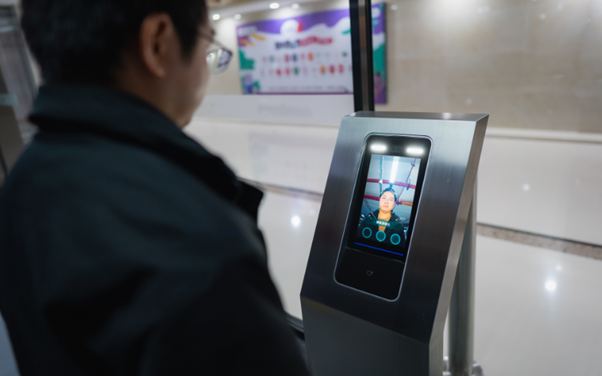Security has become a paramount concern for residential and commercial properties in Singapore. Biometric systems in Singapore, such as face recognition and fingerprint access systems, have risen as primary solutions for door access systems.
Examine the advantages and disadvantages of face recognition and fingerprint access systems, offering perspectives on their suitability for different applications.
Face Recognition Door Access Systems
Pros:
- Contactless Operation: Face recognition door access systems provide a contactless experience, which is particularly beneficial in maintaining hygiene. Users simply need to stand in front of the camera, and the system identifies them without any physical touch.
- Speed and Efficiency: These systems offer quick and efficient authentication. High-quality cameras and advanced algorithms ensure instantaneous recognition, making it ideal for high-traffic areas.
- High Security: Face recognition systems are challenging to deceive. They analyse multiple facial features and can detect attempts to use photographs or videos for unauthorised access. This feature enhances the overall security level.
- User-Friendly: Face recognition systems are easy to use for users. There is no need to remember passwords or carry access cards. This simplicity can improve user satisfaction and reduce administrative burdens.
Cons:
- Privacy Concerns: The use of facial data raises significant privacy issues. There are concerns about data misuse and unauthorised access to personal information. Strict regulations and robust data protection measures are necessary to address these concerns.
- Environmental Dependency: The performance of face recognition systems can be affected by environmental factors such as lighting conditions. Poor lighting or extreme weather conditions can impact the accuracy of recognition.
- High Initial Cost: Implementing a face recognition door access system can be expensive. High-quality cameras and sophisticated software contribute to higher initial investment than other biometric systems.
Fingerprint Access Systems
Pros:
- Proven Technology: Fingerprint access systems are a well-established technology. They have been used for years in various applications, providing reliable and trusted authentication.
- Cost-Effective: Compared to face recognition systems, fingerprint access systems generally have a lower initial cost. The technology is more affordable and widely available, making it accessible for smaller businesses and residential properties.
- Compact and Easy to Install: Fingerprint scanners are compact and can be easily integrated into existing door access systems. Installation is straightforward, and the system can be up and running quickly.
- High Accuracy: Fingerprint recognition is highly accurate. Each person’s fingerprint is unique, making it an effective means of identifying individuals with a low risk of false positives or negatives.
Cons:
- Wear and Tear: Over time, the sensors in fingerprint access systems can become worn out, affecting their performance. Regular maintenance and eventual replacement of sensors are necessary to ensure continued accuracy.
- Hygiene Issues: Unlike face recognition systems, fingerprint access systems require physical contact. This feature can be a concern in environments where hygiene is critical, such as healthcare facilities.
- Vulnerability to Damage: Users with damaged or worn-out fingerprints, such as those working in manual labour jobs, might face difficulties in using fingerprint access systems. The system may fail to recognise their fingerprints accurately.
Comparison and Considerations
When choosing between a biometric system in Singapore, several factors need to be considered:
- Application Environment: Face recognition systems might be preferable due to their contactless nature for environments requiring high hygiene standards, such as hospitals or food processing units. In contrast, fingerprint systems are well-suited for controlled environments with lower hygiene concerns.
- Budget: Budget constraints can significantly influence the decision. Fingerprint access systems are more cost-effective, making them suitable for smaller businesses or residential applications. However, organisations with a higher budget might opt for the advanced features of face recognition systems.
- Security Needs: Both systems offer high security, but face recognition systems have an edge in preventing unauthorised access attempts through fake credentials. This feature can be critical for high-security areas such as corporate offices or government buildings.
- User Convenience: Face recognition systems are superior for user convenience due to their ease of use and minimal interaction required. However, fingerprint systems are also user-friendly but require users to remember to touch the sensor correctly.
ALSO READ: How To Select A Good Biometrics Access System
Conclusion
When comparing face recognition door access systems to fingerprint access systems, it is clear that there is no universal solution. Both options come with their own set of pros and cons, catering to various needs and settings. Companies and property managers can confidently select the door access system in Singapore that best suits their requirements by thoroughly assessing the facility’s requirements, financial limitations, and security standards.
Visit iDLink Systems to discover how our innovative solutions can enhance your security and streamline access control.










